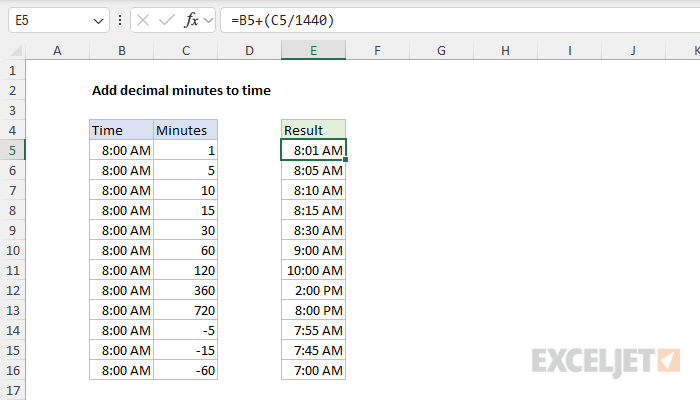Effective Techniques for Cleaning Vinyl Siding in 2025
As homeowners turn their attention to enhancing the beauty and longevity of their exteriors, cleaning vinyl siding remains a crucial aspect of home maintenance. Vinyl siding is known for its durability, but over time, it can accumulate dirt, algae, and other unwanted stains that detract from its charm. For many, knowing how to clean vinyl siding effectively can lead to improved home aesthetics and increased property value.
In this practical guide, we will explore a variety of methods and tips for keeping your vinyl siding in top condition, focusing on essential aspects such as the best cleaners for vinyl siding, DIY solutions, pressure washing techniques, and maintenance schedules. With the right knowledge and tools, cleaning vinyl siding can be a straightforward task that not only preserves its appearance but also extends its lifespan.
In the following sections, we will delve into the strategies for removing stains from vinyl siding, maintaining its shine, and ensuring its durability. You'll also learn about eco-friendly options and professional cleaning techniques to suit various needs. Let's get started on your journey to sparkling, well-maintained vinyl siding!
Choosing the Best Cleaning Products for Vinyl Siding
Building on the introduction to vinyl siding care, selecting the appropriate cleaning products is the first step in maintaining your home's exterior. The market offers a wide range of vinyl siding cleaning products, from specialized commercial solutions to natural DIY cleaners that you can create at home.
When selecting a cleaning solution, aim for products that effectively tackle dirt and stains without damaging the vinyl. Eco-friendly vinyl siding cleaners are increasingly popular among environmentally conscious homeowners. These cleaners typically contain biodegradable ingredients that are gentle on the siding yet tough on grime. For example, a mixture of vinegar and water can provide a safe and effective way to clean vinyl siding with vinegar, eliminating not just dirt but also mold and mildew.
Experts agree that one of the key attributes to look for in any cleaner is its compatibility with the siding material. Vinyl siding materials are synthetic, and harsh chemicals can result in discoloration or degradation over time. Always read product instructions and ensure the cleaner doesn’t contain abrasive substances.
Commercial vs. DIY Cleaners
When it comes to selecting cleaning agents, homeowners can choose between commercial cleaners and DIY options. Commercial cleaners are easy to use and often come with specific instructions tailored for cleaning vinyl siding. Many reputable brands are available, and they usually come equipped to tackle tough jobs, like removing stubborn stains.
On the other hand, DIY cleaners are not only cost-effective but also allow you to customize solutions based on the specific types of stains or dirt buildup you are facing. A popular DIY method involves mixing three parts water with one part vinegar, creating an efficient cleaning solution for vinyl siding. This method is revered for its low environmental impact while effectively combating mildew.
Regardless of the choice, ensure you test a small, inconspicuous area before widespread application, as some products may react differently based on the hood's exposure to sun or moisture.
Understanding Vinyl Siding Discoloration
Another critical aspect to consider when choosing cleaning products is understanding vinyl siding discoloration; knowing how and why discoloration occurs can guide your maintenance efforts. Factors such as prolonged exposure to sunlight, weather conditions, and moisture can lead to a change in color over time.
In many cases, these discolorations can be effectively treated or prevented through proper cleaning and maintenance practices. For instance, routinely rinsing your siding with water, especially after heavy rain or snow, can help minimize staining from environmental pollutants. Choosing a cleaning method designed to combat these changes will ultimately prolong the item’s aesthetic appeal and structural integrity.
How to Wash Vinyl Siding by Hand
With these fundamentals established, let’s delve into the practical aspects of washing vinyl siding by hand. This method is often preferred by many homeowners who wish to maintain complete control over their cleaning techniques, preventing potential damage from unregulated pressure washers.
To start, gather the necessary cleaning tools for vinyl siding: a long-handled scrub brush, a bucket, and your chosen cleaning solution—whether it’s a commercial product or DIY concoction. It's advisable to perform your cleaning during an overcast day, as direct sunlight can cause cleaning solutions to dry too quickly, leading to streaks.
Begin by rinsing the siding with plain water to remove loose dirt and debris. Then, apply the cleaning solution using the scrub brush, starting from the bottom and working your way up. This approach prevents streaking and ensures an even application. After scrubbing, rinse off the cleaning solution comprehensively using a garden hose. If it’s been a while since the last cleaning, or if you've got challenging stains such as algae or mold, you may need to repeat this process to achieve optimal results.
Seasonal Maintenance Tasks for Vinyl Siding
After establishing a cleaning routine, homeowners should also integrate seasonal maintenance tasks into their schedules. Keeping up with the maintenance schedule is essential for preventing long-term damage to your vinyl siding. This includes annual deep cleans and regular spot-checks for stains or discoloration.
During spring, it’s prudent to conduct a thorough check of your siding for any winter damage. Clean any mildew and inspect for scratches or discoloration caused by extreme temperatures. As summer approaches, a quick clean every couple of months can help prevent dirt build-up, while fall maintenance will ensure that any debris from fallen leaves is addressed to avoid clogging gutters and creating moisture issues.
Finally, winter care includes ensuring that your siding is not subjected to ice dams or excessive snow buildup, which can lead to long-term damage. Use a soft brush to carefully remove snow and avoid using sharp tools that can scratch and ruin the surface finish.
Pressure Washing Techniques for Vinyl Siding
This naturally leads us to the topic of pressure washing vinyl siding, a popular and efficient cleaning method. While it can save time and energy, using a pressure washer involves understanding specific settings and techniques to avoid damage.
When pressure washing, selecting the correct settings is vital: Start with a lower pressure setting, ideally around 1200-1500 PSI. This helps avoid causing cracks or creating unnecessary damage to the siding surface. Be sure to maintain a distance of about 3-4 feet while aiming the wand at a downward angle. This method helps prevent water from seeping behind the siding, which can lead to mold and mildew growth underneath.
It’s also crucial to apply a cleaner designed specifically for pressure washing. These products can penetrate stains effectively while being gentle on the surface of the siding. After allowing the cleaning solution to dwell for the recommended time, rinse thoroughly while ensuring that all cleaning products are washed away.
Vinyl Siding Cleaning Safety Tips
With any cleaning task, safety should be a priority. When using a pressure washer, wearing appropriate safety gear such as goggles and sturdy footwear is essential. Additionally, ensuring the working area is clear of obstacles will help prevent accidents.
Another safety consideration is to avoid using a ladder while operating a pressure washer. Instead, utilize an extension wand to maintain your footing. If you need to reach higher areas, consider using scaffolding or hiring a professional service to minimize the risk of falls.
Preventing Mold and Algae on Vinyl Siding
Connected to the topic of cleaning, protecting vinyl siding from mold and algae growth is crucial for maintaining the integrity of your siding and enhancing its appearance. Algae growth is common in humid regions and can lead to permanent staining if left untreated. However, there are effective prevention methods that can make a significant difference.
Regular cleaning is key to prevention. Incorporating seasonal cleaning for vinyl siding into your routine drastically reduces the risk of algae and mold taking hold. Additionally, you can use a mixture of oxygen bleach and water as a preventative solution for maintaining the cleanliness of vinyl siding—targeting high-humidity areas such as the north-facing sides of buildings.
Furthermore, addressing drainage issues around your home can also lessen moisture exposure, minimizing the likelihood of mold and algae growth. Cleaning your gutters regularly will ensure runoff doesn’t continually pool against the siding, contributing to increased moisture levels.
Addressing Vinyl Siding Damage
While cleaning is important, it’s equally crucial to keep an eye out for any potential damage to your vinyl siding. Regular inspections can help identify common issues, such as warping or denting caused by severe weather. If you encounter damage, consider undertaking vinyl siding repair promptly to maintain the overall structural integrity and visual appeal of your home.
Keeping a supply of spare pieces on hand makes it simple to address minor damage, and knowing how to replace panels can empower homeowners to perform their own repairs. If the damage seems extensive or difficult to manage alone, seeking professional assistance is advisable.
Effective Vinyl Siding Restoration Tips
In the final section, we address the concept of restoration, which encompasses avenues for rejuvenating the visual appeal of aging or weather-beaten siding. Many homeowners wonder how to restore the shine and integrity of vinyl siding that has lost its luster over time.
One effective tip involves utilizing specialized vinyl siding restoration products, which can enhance color and protect against UV rays. These products work by filling microscopic scratches and creating a barrier that reflects sunlight, extending the lifespan of the color surface. Alternatively, some homeowners embrace professional vinyl siding cleaning services that offer in-depth restoration processes, including polishing and sealing.
Moreover, keeping track of seasonal cleaning tasks and performing vinyl siding maintenance can prolong the intervals between restoration needs, allowing the siding to maintain its beauty over time.
Conclusion
Maintaining the cleanliness and appearance of your vinyl siding is crucial not only for enhancing your home’s aesthetic appeal but also for preserving its lifespan. By implementing effective cleaning techniques, using suitable cleaning products, and following safety precautions, you can ensure that your siding remains in top condition for years to come. With periodic maintenance and proper care, your vinyl siding will continue to shine as a testament to your dedication as a homeowner.


